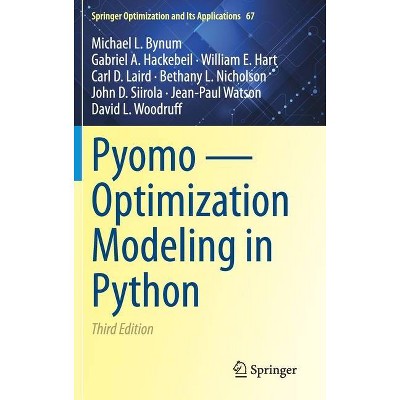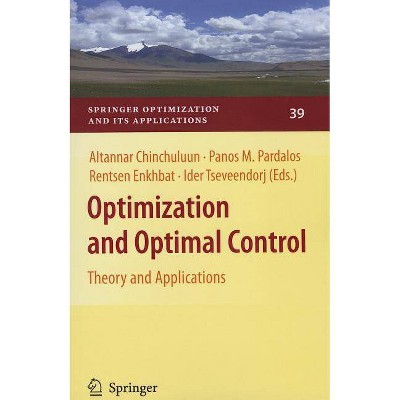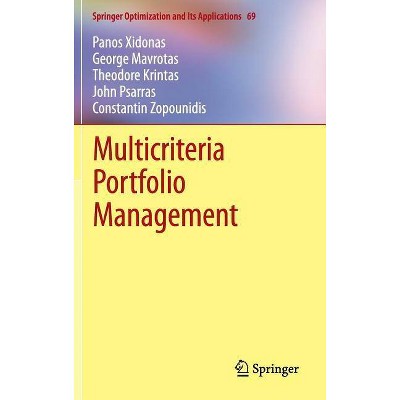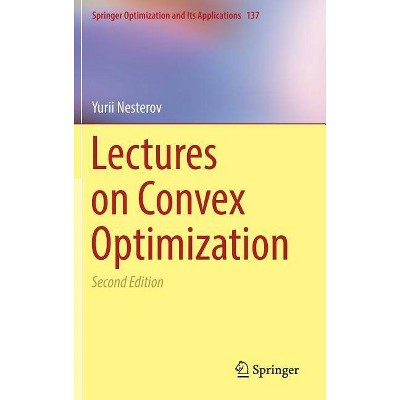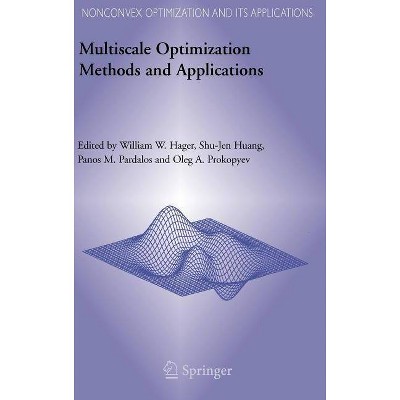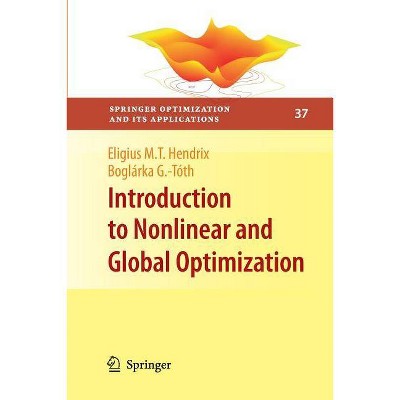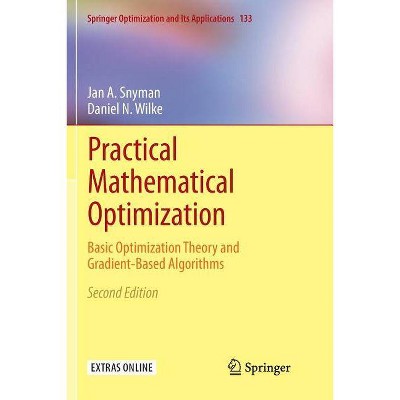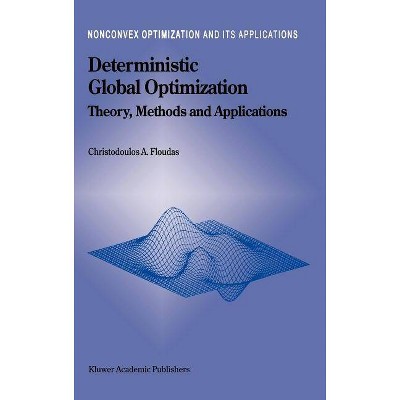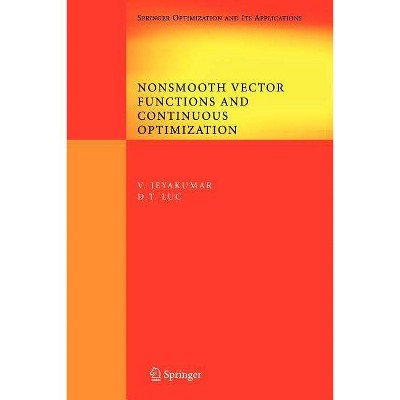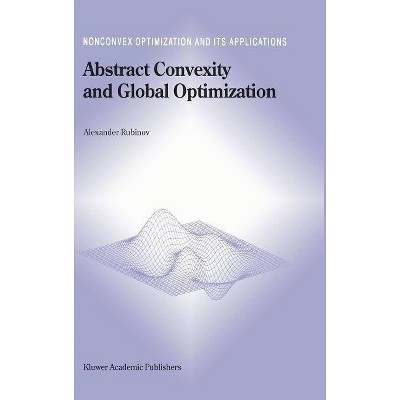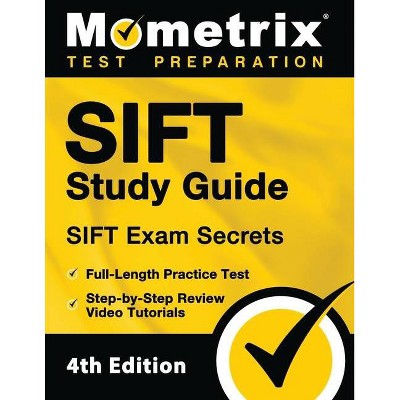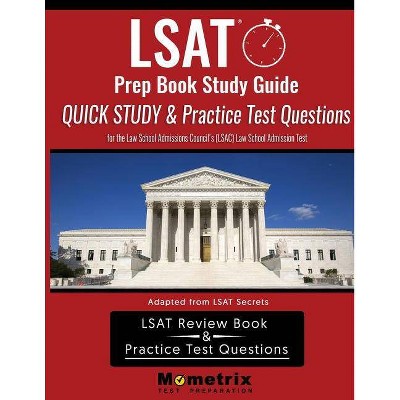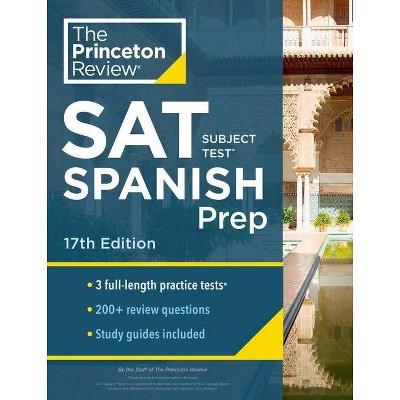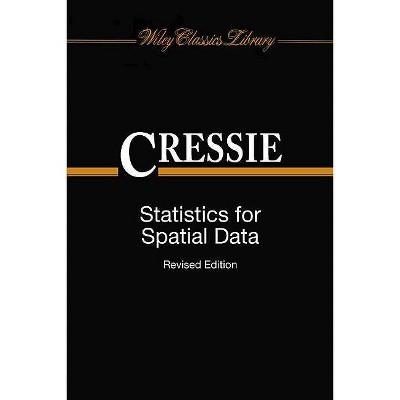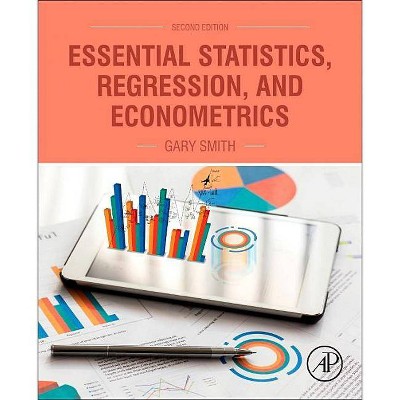Introduction to Applied Optimization - (Springer Optimization and Its Applications) 2nd Edition by Urmila Diwekar (Hardcover)

Similar Products
Products of same category from the store
AllProduct info
<p/><br></br><p><b> About the Book </b></p></br></br><p>This book presents a view of optimization independent of any discipline. This new edition contains two new chapters, one on global optimization and one of a real-world case study that uses the principles from each chapter in the book.</p><p/><br></br><p><b> Book Synopsis </b></p></br></br>Optimization has pervaded all spheres of human endeavor. Although op- mization has been practiced in some form or other from the early prehistoric era, this area has seen progressive growth during the last ?ve decades. M- ern society lives not only in an environment of intense competition but is also constrained to plan its growth in a sustainable manner with due concern for conservation of resources. Thus, it has become imperative to plan, design, operate, and manage resources and assets in an optimal manner. Early - proaches have been to optimize individual activities in a standalone manner, however, thecurrenttrendistowardsanintegratedapproach: integratings- thesis and design, design and control, production planning, scheduling, and control. The functioning of a system may be governed by multiple perf- mance objectives. Optimization of such systems will call for special strategies for handling the multiple objectives to provide solutions closer to the systems requirement. Uncertainty and variability are two issues which render op- mal decision making di?cult. Optimization under uncertainty would become increasingly important if one is to get the best out of a system plagued by uncertain components. These issues have thrown up a large number of ch- lenging optimization problems which need to be resolved with a set of existing and newly evolving optimization tools. Optimization theory had evolved initially to provide generic solutions to optimizationproblemsinlinear, nonlinear, unconstrained, andconstrained- mains. Theseoptimization problems wereoften called mathematical progr- mingproblemswithtwodistinctiveclassi?cations, namelylinearandnonlinear programming pro<p/><br></br><p><b> From the Back Cover </b></p></br></br><p>This text presents a<strong> </strong>multi-disciplined view of optimization, providing students and researchers with a thorough examination of algorithms, methods, and tools from diverse areas of optimization without introducing excessive theoretical detail. This second edition includes additional topics, including global optimization and a real-world case study using important concepts from each chapter.</p> <p>Key Features: </p> <ul> <p> <li>Provides well-written self-contained chapters, including problem sets and exercises, making it ideal for the classroom setting;</li> <p></p> <p> <li>Introduces applied optimization to the hazardous waste blending problem;</li> <p></p> <p> <li>Explores linear programming, nonlinear programming, discrete optimization, global optimization, optimization under uncertainty, multi-objective optimization, optimal control and stochastic optimal control;</li> <p></p> <p> <li>Includes an extensive bibliography at the end of each chapter and an index; </li> <p></p> <p> <li>GAMS files of case studies for Chapters 2, 3, 4, 5, and 7 are linked to http: //www.springer.com/math/book/978-0-387-76634-8;</li> <p></p> <p> <li>Solutions manual available upon adoptions.</li> <p></p></ul> <p></p> <p><em>Introduction to Applied Optimization</em> is intended for advanced undergraduate and graduate students and will benefit scientists from diverse areas, including engineers.</p><p/><br></br><p><b> Review Quotes </b></p></br></br><br><p>From reviews: </p> <p>"The book is well written and the presentation is rigorous and self-contained. The book will be of interest to researchers in various fields as well as undergraduate and graduate students in engineering sciences, management science, and decision science." <br><strong>--I. M. Stancu-Minasian, <em>Zentralblatt MATH</em>, Vol. 1043 (18), 2004</strong></p> <p>"Urmila Diwekar's book on applied optimization is one of the few books on the subject that combines impressive breadth of coverage with delightful readability. In her exposition of concepts and algorithms in the major areas of optimization, she always goes to the heart of the matter and illustrates her explanations with simple diagrams and numerical examples. Graduate and undergraduate students, who constitute part of the target audience, should find this a very useful book."<br><strong>--Jamshed A. Modi, <em>Interfaces</em>, Vol. 36 (1), 2006</strong></p> <p>"The book is well-written, and . . . it covers fairly significant territory, in a relatively slim volume. This work is definitely a welcome addition to the existing optimization literature, given its emphasis on modeling and solution practice, as well as its 'user-friendly' style of exposition."<br><strong>--János D. Pintér, <em>European Journal of Operations Research, Vol. 177, 2007</em></strong></p> <p>From the reviews of the second edition: </p> <p></p> <p>"Diwekar's book covers a wide variety of optimization topics, including some recent developments, in under 300 pages. ... The book would be suitable as a textbook; it contains numerous exercises and a solutions manual is available." (John D. Cook, MAA Online, February, 2009)</p><br>
Price History
Price Archive shows prices from various stores, lets you see history and find the cheapest. There is no actual sale on the website. For all support, inquiry and suggestion messagescommunication@pricearchive.us
